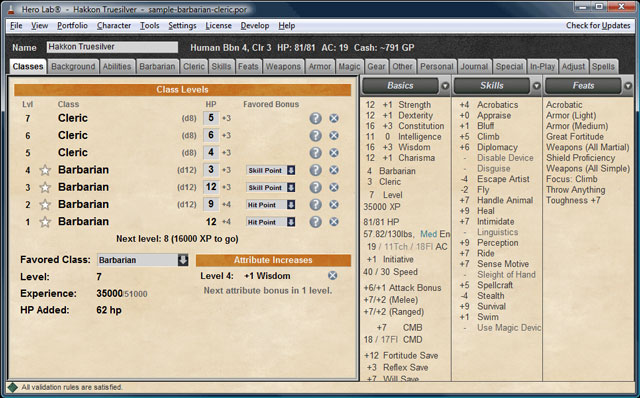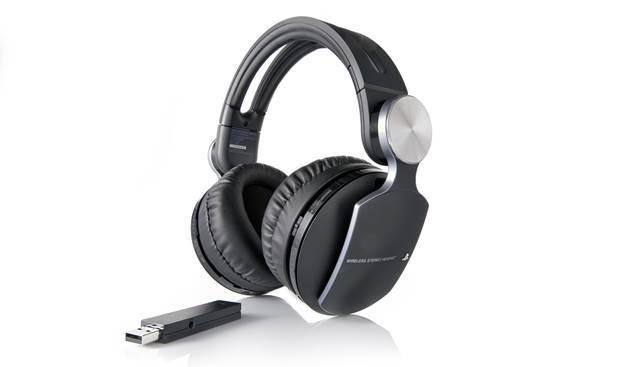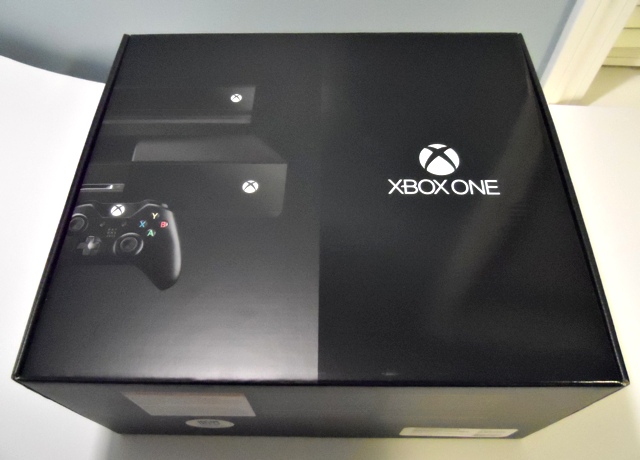

Five years. The length of an average console generation. The Elder Scrolls IV: Oblivion ushered in the current generation and let everyone know what the tech was capable of, and it also ate many gamers’ lives, where being eaten never felt so great. Five years of anticipation is, as they say, a lot to live up to. So The Elder Scrolls V: Skyrim comes marching along with its massive ad campaign, making sure everyone knows of its imminent release. Does Skyrim have the clout to back up its swagger?
Yes. Yes it does.
Note: We’ve been careful to make what we believe to be a spoiler-free review.
Update: Some PS3 users have experienced a serious problem where after roughly 25 hours of play time, the game loses performance until it becomes very choppy, and for some people it's unplayable. Since it doesn't affect all users, it doesn't change our score, but beware if you're planning on playing on PS3.
Stepping into Skyrim’s world is like wrapping yourself in a furry, Nordic cloak that smells like your childhood blanket. Yes, the Oblivion you remember fondly is back – everything that made the last Elder Scrolls so lovable has returned. Yet now it’s a bit wilder, a bit rougher, and a bit more dangerous, and boy is the game better for it. Whereas Cyrodiil, the province from Oblivion, was a fairly typical temperate climate with deciduous forests and gentle rolling hills, Skyrim is a bitter, cold northern region (remember those impassable mountains in the north of Cyrodiil? Skyrim is just beyond them). This doesn’t mean the game world is a monotonous frozen waste: the land is diverse, but it has a wonderful “tone” to it that is very much Viking Axe Clanking and Visible Frosty Breaths Huddled Around Crackling Fires. It’s forbidding, slightly bleak, and yet also incredibly cozy when you come in from the cold.
Perhaps never before has a game world so perfectly balanced a feeling of a completely inviting attitude with intimidating danger. Oblivion could scare you with its bears and trolls. Pfft. Skyrim has freaking giants that will kill you in one thwomp of their mighty clubs, and of course, here there be dragons. Every battle with a dragon is epic, from the first sound of a distant roar, to the glimpse of a soaring beast through the treeline, to the fantastic swoop and crash as the monster lands and unleashes its fiery breath. The art, animation and sound design for the dragons is stupendous across the board. At first the dragons look generic, but closer inspection reveals fantastic subtle details in their anatomy. Our favorite aspect, though, is the sound of their breath attacks, which isn’t just the whoosh of flames, but also has a secondary sound like a giant flute, providing musical character and power to these mighty beasts.
Oblivion was a beautiful game for its time, and Skyrim has only so many resources to work with (on consoles at least), but Bethesda has squeezed every drop of beauty it could out of simple attention to detail and imaginative art design. Note how cold winds visibly kick up off rocks, how salmon leap up small waterfalls, how the towns are built on majestic cliffs and have the coziest hearths you’ve ever seen. Make sure to go out on a clear night in the northern part of the land and just watch the sky. Skyrim will inspire awe at many turns, and when you think you’ve seen it all, it will surprise you yet again.
It seems like an innocuous addition – whoop de do, we can have a weapon or spell in either hand. It changes a lot. Let’s say you go for dual wielding weapons. Nothing special, since you just slash faster, right? But wait: consider magic weapons. Now you could wield a paralyzing weapon in one hand and a magicka-draining one in the other. The combinations become endless. We focused on a mage-type character, so we barely ever used weapons at all. Instead, we dual-wielded spells. To give an idea of combat depth, we’ll break down a typical fight.
We start with Summon Ice Atronach in one hand, Ironflesh in another. While summoning our elemental tank, we reinforce our defenses. Next we swap to Wall of Ice in one hand and Lightning Bolt in the other. While spraying defensive damage-over-time ice all over the floor, we’re simultaneously damaging and destroying the magicka of our target with lightning. Once our ice field is properly laid down, we swap that hand to Lightning Bolt so that we have Bolt in both hands. Normally, firing the same spell with both hands results in two bolts, but since we purchased the Dual Casting perk, we get a different animation where both hands create a single, super-powerful bolt. Since we also spent a perk point on another dual-casting related perk, our dual-cast bolts additionally stagger the opponent. If we get in danger, we swap to dual-cast healing for super-mega recovery. Or we could refresh our defensive spells while also healing. Getting crazy enough for you?
You probably know by now that Skyrim features a new system where you slay dragons, absorb their souls, and then use those souls to unlock Shouts in the dragon language. We don’t want to give any of the mystery away, so we won’t go into details. Just know that the Shouts are friggen’ awesome and you’ll be shouting the crap out of your enemies and greedily hunting down dragons and the Word Walls that unlock pieces of Shouts. Know that some important Shouts are unlocked during the main story quest, so you might not want to ignore the story (more reasons on that below).
We’re still not sure how we feel about the new system for managing all your items and spells, as it has advantages and disadvantages over Oblivion’s. Oblivion had the favorites wheel, which limited what you could have quick access to. Skyrim simply has a favorites list, which you can add anything you want to. It seems super handy at first, but depending on what you want to do, it becomes unwieldy. Since we played a mage, we purchased a lot of spells. Eventually our favorites list became so long that it was no longer convenient. We ended up balancing usage of quick slots (of which you have only two on consoles; PC users get ten), favorites, and then actually going into the main spell list to juggle all the spells we wanted to cast. It’s not intuitive, but if you get used to it you can be pretty fast – but no matter what, you’ll be plunging through multiple layers of menus or scrolling through long lists a lot if you want to make use of every tool at your disposal.
We imagine if your focus is on melee combat the system won’t grow out of control, since you’ll just swap between a few spells and items. However we should note that the quickslot system is one of the strangest, most unintuitive systems we’ve ever encountered. You can assign one thing to Left on the d-pad and one thing to Right (again, PC players get to use all the number keys, making things much easier). We figured that pressing left would equip that thing in our left hand, and then pressing left again would swap back to whatever we were originally holding. Instead, it equips the item to both hands. It’s hard to explain, but prepare to be baffled when you first start playing with quickslots. This system could have been much better, but it works well enough after you get used to it.
On the next page we'll look at some non-combat systems...
A lot of people we’ve talked to loved Oblivion but found its actual main story thread boring. They’d play a bit of it and then go back to sidequests and random messing around. Many seemed to not even bother to finish the story and yet play for hundreds of hours. As we said before, we’ll spoil nothing here. Just know that Skyrim’s story is leaps and bounds over Oblivion’s and very much worth playing through. It’s not long – clocking perhaps ten hours for an average player, but the game overall is absolutely gigantic, and we predict it has the ability to provide considerably more hours of entertainment than Oblivion.
Skyrim’s crafting system is robust to say the least. You can’t create spells anymore (for reasons we outline below), but you can still perform alchemy and enchant items, and now you can create and improve items with Smithing, which is divided amongst tasks at forges, smelting furnaces, workbenches, grindstones, and tanning racks. Like the idea of having the baddest-ass set of weapons and armor in the land? You can spend insane hours seeking out rare ores, mining them, and then working them into the exact items you want. You can even cook food now, although it doesn’t have its own skill path and is a simple supplemental way of giving you healing options.
If you enjoy the role-playing aspect of RPGs, the diverse cast of characters to interact with, gain as followers, and follow intrigue plots with is downright staggering. With even better writing and voice acting this time around (with voices provided by no less than Christopher Plummer, Max Von Sydow, and Joan Allen), meeting and talking to people is like its own game.
A little over a year ago we posted an article proposing what we wanted to see from the fifth Elder Scrolls game, so we thought it would be interesting to see whether Bethesda was thinking along the same lines. Let’s break it down:
We asked for an intuitive skill system. Skyrim responded beautifully. The system is extremely simple on the surface, but super deep with options. Each time you level up, you simply choose to increase Magicka, Health, or Stamina, and then you have one perk point to spend. Perk slots are unlocked based on how high of a skill you have in a given area – for example, in order to spend a point on a perk that makes casting Novice level Destruction spells cost half as much Magicka, you need to have built up Destruction to 20 or whatever. That’s really it. However, there are so many perk slots available, the possibilities are staggering. It’s totally freeform, easy to understand, and exciting when you see the crazy stuff available at the higher perk slots. Also, if you can’t decide what to purchase, you can save your perk points for later.
We asked for monsters that scale properly, or don’t scale at all. Oblivion’s weird scaling of monster power meant that as you leveled up, monsters could actually out level you, filling the game with random difficulty road blocks. Skyrim has invisibly solved this problem. The monster scaling is so sublime it’s likely you’ll never notice it – for us the game was always challenging throughout, yet never impossible. If we were smart and used every strength of our character’s specialties, we did fine. If we played lazily, we died horribly. We’ve heard that Skyrim’s dungeons level up as you do – until you enter them, and once you enter one, its level is fixed, so if it’s too tough for you, you can leave, level up, and come back later powerful enough to tackle it. We’ll say, though, that no dungeon was ever too tough on our first pass, yet never disappointingly easy.
We asked for balanced player tools. Oblivion provided tools that became useless (like bows) or became overpowered (like spell crafting). Skyrim has done an admirable job tackling these problems, even if it didn’t solve them completely. Making your own spells is out (sorry spellcrafters, but those super spells were stupidly overpowered), but there are more regular spells available. Bows are better simply because the game provides more enemies that attack from range instead of rushing you and negating the bows’ usefulness – and if you don’t invest in spells, you’ll want bows to deal with flying dragons. We also have yet to encounter the way-too-good vampiric weapons that removed the need for tactics in melee. Summoned creatures are still a bit too good, but overall the balance is vastly improved (taking into account that power players may yet discover the overpowered stuff).
We asked for more than five NPCs. Oblivion had a cast of about 15 (so we exaggerated). Skyrim has 70. Also we don’t recall seeing obvious copy-and-paste NPC faces everywhere.
We asked for better-looking women. Hmmm. We guess they look a bit better? They’re not quite the horror-beasts from Oblivion, but we had a difficult time making our female character into anything other than a geriatric recovering bulimic. We guess the excuse could be that the cold north is not kind to youthful flesh.
We asked for better (or no) encumbrance. Erm, we had a problem with the encumbrance in Skyrim for a good portion of the game, but it’s because we were being stupid. Granted, the game doesn’t do a good job of informing you that you can have a follower NPC carry stuff for you (essentially doubling your encumbrance), but perhaps we should have figured it out. Regardless, you’ll learn to hate dragon bones, because damn those things are heavy and yet valuable, so get ready to drop crap all around every dragon corpse you encounter.
We asked for pallet-swapping of armor. Not important, but we wanted to customize our character’s look. We didn’t see anything of the sort in Skyrim, but then we didn’t skill up the Smithing path where you create your own weapons and armor.
We asked for a better map. Functionally, there’s basically no improvement. You still have to memorize which cities the guilds and your houses are in, and everything just has an icon with a name on it. The map is in pretty 3D now, so thanks, we guess.
We asked for a smaller world (or more level designers). Ah, now we’re getting to the good stuff. Bethesda knew that Oblivion’s copy-paste dungeons got boring, but they did the better solution – instead of making fewer total dungeons, they made just as big of a world… and somehow made every dungeon we encountered unique. We don’t know for sure the game has no copy-paste dungeon design, but we never saw it. Hell, we wandered into random dungeons and encountered puzzles and designed boss encounters. This improvement is the single best thing Bethesda did with Skryim, because that huge world you see truly is huge - you can wander and discover and find delight and wonder at every turn. Bravo, Bethesda, we salute your dedication (and feel sorry for your level designers, who must have busted their asses).
Finally, we asked for a bit less crashing. Believe it or not… they did it. The game did crash on us, but it was exactly five times over perhaps 50 hours of play (on Xbox 360). Compared to Oblivion’s crashing it’s a vast, vast improvement. Oblivion was guaranteed to crash in any three-hour play session, whereas Skyrim ran crash-free during eight-hour marathons. Note that there’s a day one patch that’s supposed to address stability, but then the game froze on us not one hour after installing the patch, so yeah. Also, on PC the game pretty much did what Oblivion did: crash every few hours. Such is the life of a PC gamer, though, and not every PC will have this problem.
On the next page, the verdict!




 Disney Infinity: Marvel Super Heroes Complete Achievements List
Disney Infinity: Marvel Super Heroes Complete Achievements List Must-Have Tabletop & Roleplaying Game Companion Apps & Software
Must-Have Tabletop & Roleplaying Game Companion Apps & Software Sony Pulse Wireless Headset: Elite Edition Review (PS4/PS3)
Sony Pulse Wireless Headset: Elite Edition Review (PS4/PS3) Microsoft Xbox One Review And Giveaway
Microsoft Xbox One Review And Giveaway What To Get For the Wii U Owner In Your Life
What To Get For the Wii U Owner In Your Life